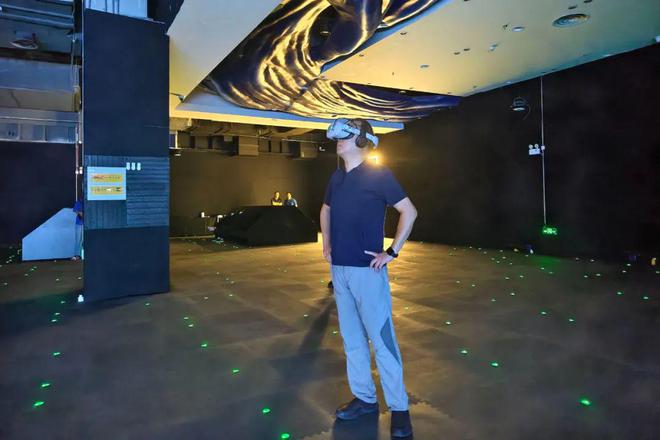
According to Korean media sedaily, Samsung Electronics is actively promoting an extended reality (XR) project called Infinite. The project is scheduled to be shown to the public for the first time at the Galaxy Unpacked launch event in January this year, and is expected to be officially released in the third quarter of 2025. This news has caused widespread concern in the science and technology industry, but a careful analysis of this project, we are not difficult to find that although Samsung Electronics has been in the forefront of technological innovation, the Infinite project has many points worth discussing.
First of all, from the perspective of technological development, XR technology (including AR, VR, etc.) does represent an important direction of future technology. XR technology can not only provide users with an immersive visual experience, but also play an important role in many fields such as healthcare, education, and entertainment. However, the cutting-edge nature of the technology does not mean that any XR product will be successful in the market. The portability and versatility pursued by the Samsung Infinite project may seem to meet market needs, but it may face many challenges in practical applications.
In terms of weight, the Infinite glasses are expected to be only 50 grams, which is really impressive. However, lightness is not the same as comfort. As a wearable device, XR glasses are designed not only for weight, but also for ergonomics and material science. If you ignore the fit degree and pressure distribution of the glasses and the human face only in order to pursue the weight of the light, it is likely to lead to discomfort in the use of the user, and even affect vision health. In addition, the lightness of XR glasses is also closely related to its battery life and heat dissipation performance. If these key properties are sacrificed for weight reduction, the usefulness of the glasses will be greatly compromised.
In terms of appearance design, Infinite glasses are close to the shape of ordinary glasses or sunglasses can indeed attract the attention of many consumers. However, XR glasses are fundamentally different from ordinary glasses in terms of function, so their appearance design also needs to fully consider the implementation of these functions. For example, XR glasses usually need to be equipped with cameras, sensors and other components to capture user movements and environmental information, and the layout and size of these components will affect the appearance of the glasses. If the reasonable layout of these functional components is sacrificed just for the pursuit of fashion, then the glasses are likely to have defects in user experience.
In terms of functionality, Infinite glasses integrate advanced technologies such as payment function, gesture recognition and facial recognition. However, the integration of these functions is not a simple pile, but needs to be built on deep technology accumulation and mature solutions. For example, payment functions need to ensure the security of user information and the reliability of transactions; Gesture recognition requires high-precision sensors and efficient algorithms to recognize user actions. Facial recognition requires high-precision cameras and sophisticated image processing technology to recognize the user's facial features. If Samsung fails to make breakthroughs in these key technologies, or simply adopts off-the-shelf solutions without deep optimization, the utility and stability of these features will be questioned.
In addition, the Infinite project has many challenges in content presentation and user interaction. The core of XR technology is to provide users with an immersive visual experience, and content presentation and user interaction are key to achieving this experience. However, at present, XR content ecology is not perfect, lack of high-quality, diversified content resources. At the same time, there is also a lack of unified standards and norms for user interaction, resulting in big differences in interactive experience between different brands and models of XR devices. If Samsung fails to make breakthroughs in content presentation and user interaction, Infinite Glasses will have a hard time standing out in the market.
On the hardware side, although Samsung has made deep optimizations in image processing, user interaction and content presentation, the actual effects of these optimizations have yet to be verified. The implementation of XR technology requires high-performance hardware support, including processor, display, sensor and other components. If Samsung fails to make a breakthrough in these key components or simply adopts existing solutions without targeted optimization, then Infinite glasses are likely to have bottlenecks in performance. For example, insufficient processor performance can cause problems such as picture stalling and delay; Poor display resolution and refresh rate can affect picture quality and smoothness; Inadequate sensor accuracy can affect the accuracy and stability of gesture recognition and facial recognition.
In addition to the technical challenges, the Infinite project also faces the pressure of market competition. At present, a number of competitive products and services have emerged in the XR market, including XR devices from tech giants such as Apple and Google and new XR applications from startups. These products and services differ in terms of features, performance, price, etc., but all strive to meet user needs and enhance user experience. If Samsung fails to accurately grasp the market demand and launch Infinite glasses with differentiated competitive advantages, then this product is likely to be drowned in the market among many competitors.
To sum up, although the Samsung Infinite project represents the active exploration and innovation attempt of Samsung Electronics in the field of XR technology, it faces many challenges and uncertainties in practical application. These challenges not only come from technical bottlenecks and restrictions, but also from the pressure of market competition and the diversity of user needs. Therefore, in the process of advancing the Infinite project, Samsung Electronics needs to fully consider these challenges and take appropriate measures to deal with and solve these problems. Only in this way can we ensure the success of Infinite Glasses in the market and bring users a better experience.

Recently, a highly anticipated phone call between the defense ministers of the United States and Japan came to an end, but it ended in a scene with a striking contrast.
Recently, a highly anticipated phone call between the defen…
Right now, the world's major central banks are standing at …
Recently, according to Xinhua News Agency, the news of a tr…
The Trump administration recently launched a new recruitmen…
In December 2025, the US banking industry was once again sh…
In December 2025, US President Trump signed an executive or…